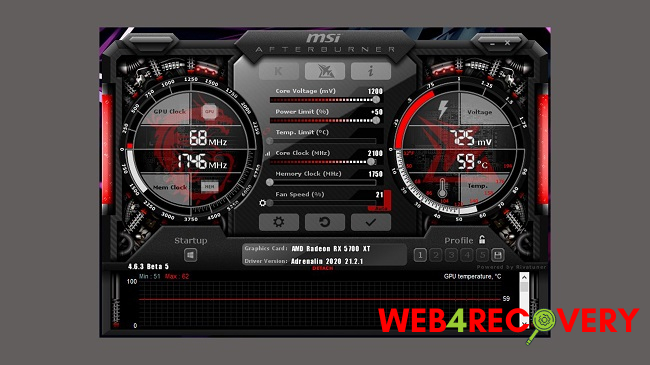Monitoring your frames per second (FPS) and system statistics can greatly enhance your gaming experience and help optimize performance.
MSI Afterburner is a popular software tool that offers comprehensive monitoring and customization options.
In this article, we will guide you on how to display FPS and stats using MSI Afterburner’s on-screen display (OSD) and address common issues when the FPS is not showing.

Understanding FPS and Stats Display with MSI Afterburner
FPS refers to the number of frames rendered per second in a game or application. Monitoring FPS can provide valuable insights into your system’s performance.
MSI Afterburner offers an OSD feature that overlays real-time information, including FPS, GPU temperature, CPU usage, and more, onto your screen while gaming or using other applications.
How to Enable FPS and Stats Display with MSI Afterburner
To enable FPS and stats display with MSI Afterburner, follow these steps:
- Download and Install MSI Afterburner: Visit the MSI website and download the latest version of MSI Afterburner. Install the software on your system.
- Launch MSI Afterburner: Open the MSI Afterburner application.
- Configure OSD Settings: In the MSI Afterburner application, click on the settings icon (gear symbol) to open the settings window.
- Enable On-Screen Display: In the settings window, navigate to the “Monitoring” tab. Check the box next to “Show in On-Screen Display” for the statistics you want to display, including FPS, GPU temperature, CPU usage, and more.
- Customize OSD Appearance and Position: Customize the appearance and position of the OSD by adjusting the settings under the “On-Screen Display” tab. You can choose the size, font, color, and position of the OSD elements to suit your preferences.
- Apply Settings and Start Monitoring: Click “Apply” to save your settings. The OSD will now display the selected statistics, including FPS, during your gaming sessions.
Troubleshooting When FPS Isn’t Showing
If you’re experiencing issues with the FPS not showing in the MSI Afterburner OSD, consider the following troubleshooting steps:
- Ensure Compatibility with Games or Applications: Some games or applications may not be compatible with MSI Afterburner’s OSD. Check the compatibility list on the MSI Afterburner website or try running a different game or application to see if the issue persists.
- Update MSI Afterburner and Graphics Drivers: Ensure that you have the latest version of MSI Afterburner installed. Additionally, keep your graphics drivers up to date, as outdated drivers can sometimes cause compatibility issues.
- Restart MSI Afterburner and the Game/Application: Close MSI Afterburner and the game or application you are trying to monitor, then relaunch them. Sometimes, a simple restart can resolve minor issues.
- Check OSD Settings: Double-check that the FPS option is enabled in the OSD settings of MSI Afterburner. Ensure that the FPS option is checked and configured correctly.
- Run MSI Afterburner as Administrator: Right-click on the MSI Afterburner shortcut and select “Run as administrator.” This can help ensure proper system access and permissions for the OSD.
- Disable Third-Party Overlays: Some other overlay applications, such as Steam’s FPS counter or Discord overlay, can conflict with MSI Afterburner’s OSD. Disable or exit these applications to see if it resolves the issue.
Conclusion
MSI Afterburner’s on-screen display (OSD) feature provides a powerful tool for monitoring FPS and system statistics during gaming sessions.
By following the steps to enable the OSD and troubleshooting common issues, you can ensure a smooth and informative gaming experience.
Take control of your performance optimization with MSI Afterburner and enjoy real-time FPS and stats display on your screen.

















